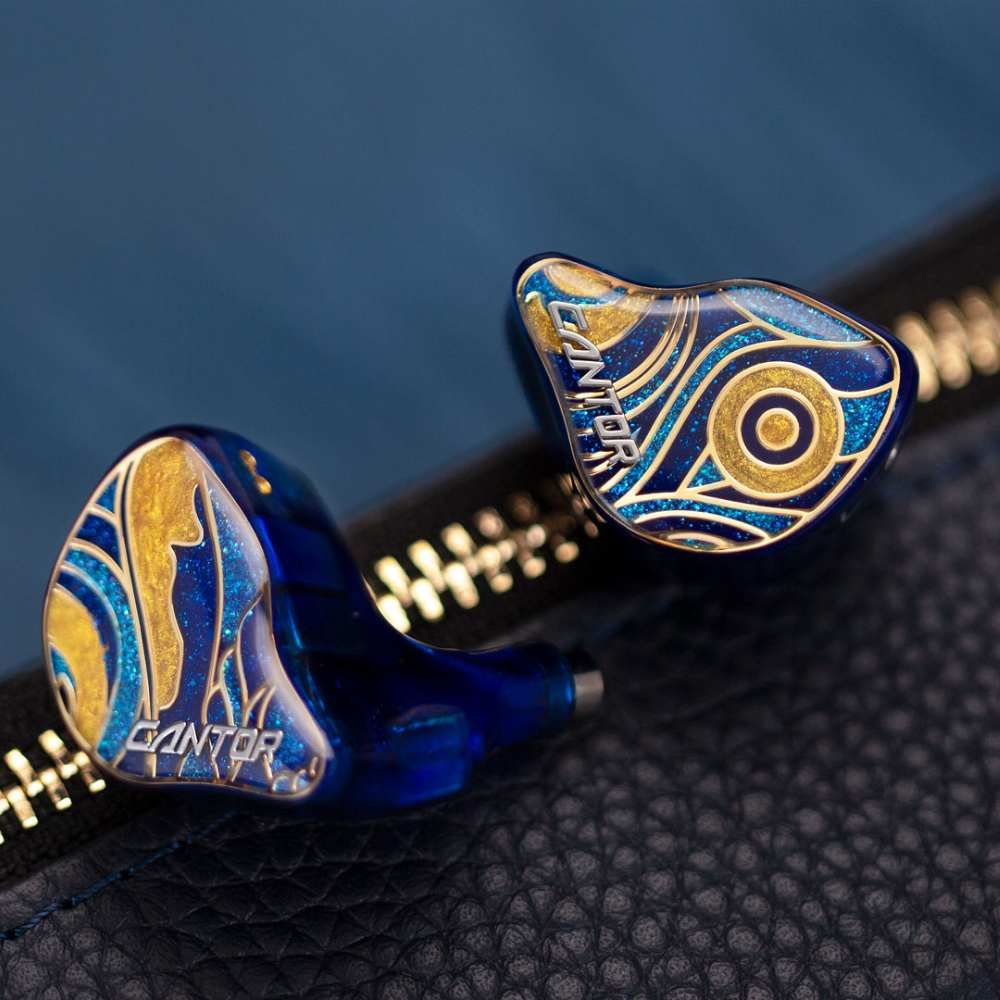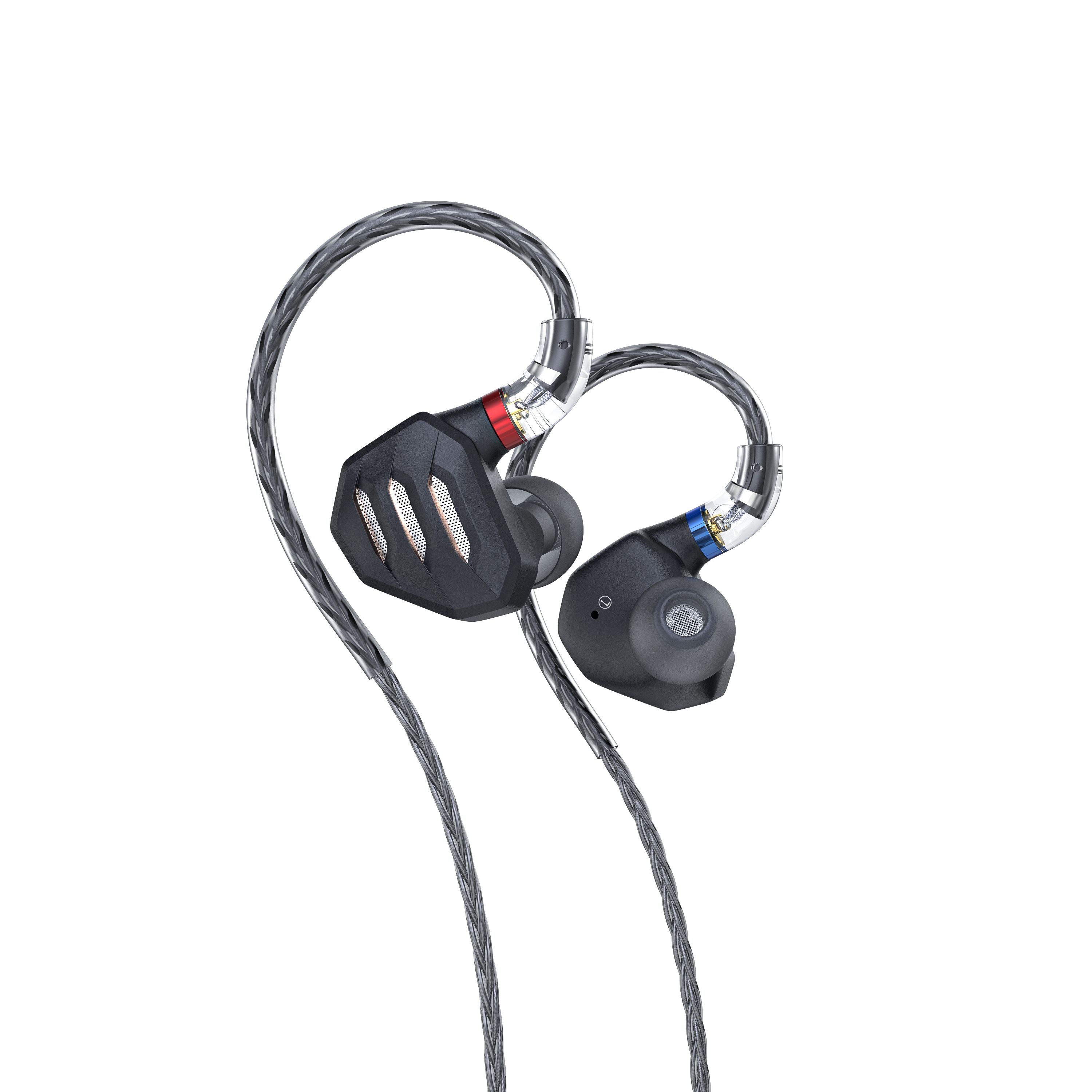Cantorvs.FH7
Sound & Specs Comparison
Information
Both IEMs are widely regarded in the audiophile community. See how they differ in terms of sub-bass response, upper mids, clarity, and overall tonality. Spider charts and rating breakdowns included.
Objective Comparison
Facts, details, stuff.
| General Info | Cantor | FH7 |
|---|---|---|
| Brand | AFUL | FiiO |
| Country | Taiwan | China |
| IEM Description | The AFUL Cantor combines technical precision with musicality in a hybrid design. Featuring a dynamic driver for powerful bass and multiple balanced armatures for clean mids and sparkly highs, it delivers a spacious soundstage with excellent separation. Tuning leans slightly toward a balanced-bright signature, making it a solid choice for detail lovers who still want some low-end punch. | The FiiO FH7 is a flagship hybrid IEM that pairs a 13.6 mm Dynamic Driver with four Balanced‑Armature drivers in a 4‑way crossover. Housed in lightweight aluminum‑magnesium alloy shells and paired with a detachable silver‑plated OFC cable, it offers secure comfort and easy cable swaps. Sonically, it delivers punchy, textured bass, warm, natural mids and a smooth yet detailed treble extension. The kit includes multiple silicone and memory‑foam tips plus a premium carry case for on‑the‑go listening. |
| Price Level | 500 – 1.000 | 100 – 500 |
| Housing & Driver | ||
|---|---|---|
| Driver Config | Multi-BA | Hybrid |
| Driver Types | Balanced Armature | Dynamic Driver + Balanced Armature |
| Shell Material | – | aluminum‑magnesium alloy |
| Cable | 4Braid 5N OFC Cable | silver‑plated OFC cable |
| Technical | ||
|---|---|---|
| Freq Range | – | 5 Hz – 40 kHz |
| Impedance (Ω) | 20 | 16 |
| Sensitivity (dB) | 106 | 111 |
| Crossover | RLC Network Electronic Crossover | 4‑way crossover |
| Platform Info | ||
|---|---|---|
| Comments | 2 | 2 |
| Visit Count | 150 | 124 |
| External Reviews | 1 | 1 |
Meta Ratings
// Nothing to compare yet.
Sound Characteristics
Cantor delivers c deeper and more extended sub-bass, reaching lower frequencies with greater authority than FH7 (8.5 vs 6). It offers m stronger and more impactful bass response, adding weight and presence where FH7 feels less assertive (9 vs 7). FH7 adds a more body and slam to bass hits, which makes it feel more physical than Cantor (9 vs 8.5). It achieves a better warmth and coherence in the lower mids, bringing more realism to guitars and cellos (10 vs 8.5). The treble on Cantor is a more nuanced and refined, especially when it comes to cymbals and ambient elements (8 vs 7). The highest frequencies on FH7 feel a more natural and less rolled-off compared to Cantor (10 vs 7.5). It creates a a wider soundstage, giving instruments more space and a better sense of placement than Cantor (9 vs 8). Track elements feel a more isolated and clean on Cantor, offering clearer focus than FH7 (8.3 vs 7.5). FH7 avoids frequency masking e more successfully, preserving clarity across the spectrum better than Cantor (9 vs 8). Notes played through Cantor feel a weightier and fuller, giving a more satisfying impact than those from FH7 (7.5 vs 7). It hits with overwhelmingly more authority during transients, creating a more explosive effect than FH7 (8.5 vs 3). It handles sibilant sounds n more gently, with fewer peaks and less sharpness than FH7 (8.5 vs 7.5). The tone quality of FH7 feels m more organic and true-to-source than the slightly artificial flavor of Cantor (9 vs 7.5). Subtle ridges and granularity are conveyed a more clearly on It, adding life that Cantor doesn’t quite match (9 vs 8).
| Cantor | FH7 | |
|---|---|---|
| Sub Bass | 8.5 | 6.0 |
| Bass | 9.0 | 7.0 |
| Bass Feel | 8.5 | 9.0 |
| Lower Mids | 8.5 | 10.0 |
| Upper Mids | 8.0 | 8.0 |
| Lower Treble | 8.0 | 7.0 |
| Upper Treble | 7.5 | 10.0 |
| Sound Stage Width | 8.0 | 9.0 |
| Detail | 8.8 | 9.0 |
| Layering | 8.3 | 7.5 |
| Masking | 8.0 | 9.0 |
| Note Weight | 7.5 | 7.0 |
| Slam | 8.5 | 3.0 |
| Sibilance | 8.5 | 7.5 |
| Timbre Color | 7.5 | 9.0 |
| Tonality | 8.8 | 9.0 |
| Texture | 8.0 | 9.0 |
Tonal Signature
// Nothing to compare yet.

